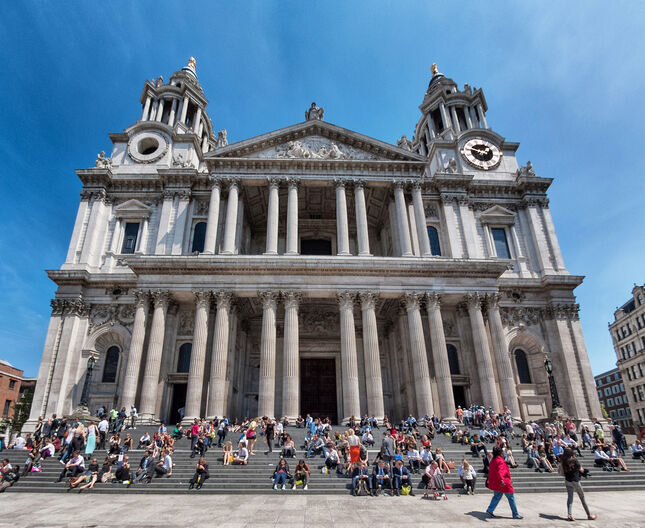Ever wondered where novelists take their inspiration from? These unexpected spots have been mentioned in some of the most famous and popular texts. From Charles Dickens to Virginia Woolf, there is plenty of rich literary history in the City.
1. Ye Olde Cheshire Cheese, Fleet St:

Probably one of the most referenced pubs I could find for this list, Ye Olde Cheshire Cheese, a grade II listed public house, was rebuilt after the Great Fire of London in 1666.
It’s the pub where Belgium detective Hercule Poirot dines with a new client, Captain Hastings, in The Million Dollar Bond Robbery. In Ralph the Heir, written by Anthony Trollpe, Ontario Moggs speaks to a debating club there, and Robert Louis Stevenson writes, ‘a select society at the Cheshire Cheese engaged my evenings’ in his novel, The Dynamiter.
Regular punters included, Oliver Goldsmith, PG Wodehouse, Arthur Conan Doyle, Wilkie Collins, Mark Twain, William Thackeray and Charles Dickens, who also mentions the pub in A Tale of Two Cities.
Additionally, in 1890, W. B. Yeats and Ernest Rhys founded The Rhymers’ Club, a group of London-based poets who frequented the pub. In his poem The Grey Rock, Yeats begins by addressing them, ‘Poets with whom I learned my trade, / Companions of the Cheshire Cheese.’
2. In T. S Eliot’s The Waste Land, plenty of streets and notable places within the City of London are mentioned, including a swarm of city workers walking across London Bridge:
Unreal City,
Under the brown fog of a winter dawn,
A crowd flowed over London Bridge, so many,
I had not thought death had undone so many.
And a pub along Lower Thames Street:
‘This music crept by me upon the waters’
And along the Strand, up Queen Victoria Street.
O City city, I can sometimes hear
Beside a public bar in Lower Thames Street,
The pleasant whining of a mandoline
And a clatter and a chatter from within
3. Villette, by Charlotte Bronte:
In Villette, the narrator, Lucy Snowe, expresses her love of the City:
‘Since those days, I have seen the West End, the parks, the fine squares; but I love the city far better. The city seems so much more in earnest: its business, its rush, its roar, are such serious things, sights, and sounds. The city is getting its living – the West End but enjoying its pleasure. At the West End you may be amused, but in the city you are deeply excited.’
She also climbs up the steps of the dome in St. Paul’s Cathedral to look out over the City.
4. St Dunstan-in-the-West, along Fleet Street, has famous connections to literature.

First published as a Victorian penny dreadful serial running from 1846 to 1847, Sweeney Todd’s barber shop is next door to St Dunstan’s in The String of Pearls. The text also shows Sweeney Todd dispose of his victim’s bodies in the crypt at St Dustan’s.
The church also has connections to the poet, John Donne, who held the benefice there from 1624 – 1631 whilst he was Dean of St Paul’s.
For the latest headlines from the City of London and beyond, follow City Matters on Twitter, Instagram and LinkedIn.







